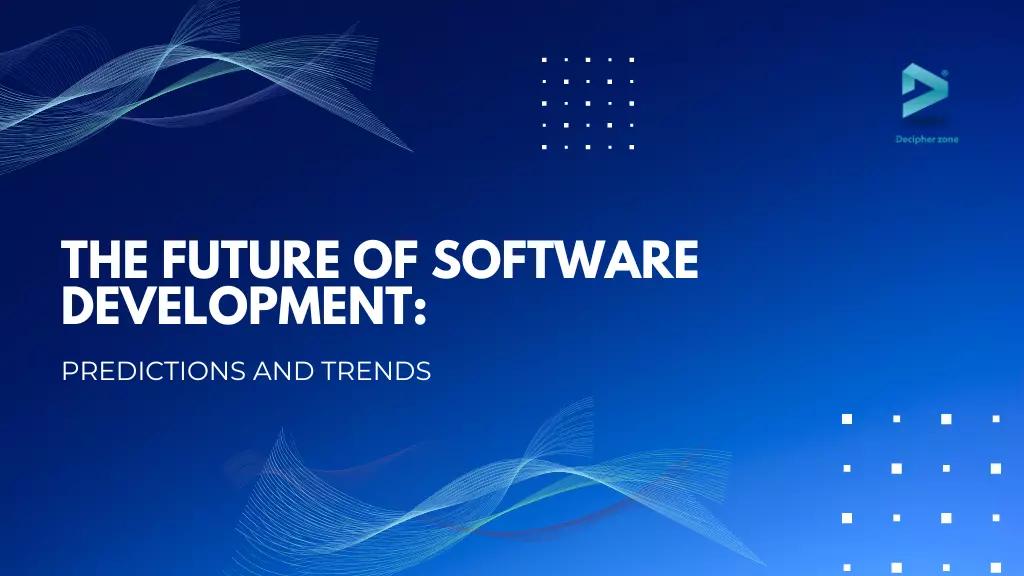Software development is an industry that always continues to change. However, predicting the exact trends that will rule its future can be quite challenging, mainly because there are so many different factors to consider.
Still, with the right approach, anything is possible. That’s why in this article, you will find a few of the most probable scenarios that everyone should look out for in the coming months.
Read: What is agile software development
For instance, it’s likely that more and more companies will soon switch to cloud computing to increase security and save more money. Moreover, Python is expected to experience a more rapid rise than ever before.
Additionally, even though new to some entrepreneurs, AI and machine learning are here to stay. Soon, they will play a crucial role in assisting new and inexperienced engineers.
If you’re curious to learn more about the most important trends likely to reign in the software development world in the nearest future, keep reading!
Increased Popularity of Cloud Computing
Undeniably, the era of cloud computing is upon us, and the number of organizations that have no other choice but to switch to the cloud will grow. Of course, it’s not a brand-new solution that no one has heard about yet.
Read: What is Custom Software Development
Cloud computing has been around for a while, but it’s still establishing itself as one of the best hosting alternatives, and some enterprises are still on the fence about whether they should move their operations to the cloud.
Read: 5 Ways Cloud Computing Can Benefit Web App Development
Cloud computing is becoming increasingly popular among developers as it offers numerous benefits such as improved security, cost savings, scalability, and flexibility. As more businesses move to the cloud, it’s likely that your software development team will need to be ready for the transition.
This means staying up-to-date on the latest cloud technologies, understanding how to implement them, and ensuring that all data is secure in the cloud.
Rise of Python
Even though it was first developed as a hobby project, Python is quickly becoming the most popular programming language for software development thanks to its ease of use and versatility. It’s been used in a variety of applications, from web development to data science, and its popularity is expected to continue rising in the upcoming years.
It’s a concise and powerful programming language that stands out from the crowd thanks to its simplicity and low barrier for beginners. Some people also say that it works particularly well in data engineering, but it can also surely do wonders in other fields.
With its simple syntax and wide range of libraries and frameworks, it’s easy to see why Python remains the go-to programming language for developers.
AI and Machine Learning Taking Over
Software development isn’t just about coding anymore. Artificial Intelligence (AI) and Machine Learning (ML) have already made their way into the industry, and they’re here to stay. AI and machine learning can help engineers automate specific tasks and make better decisions by analyzing huge chunks of data more precisely and without human errors.
For instance, Artificial Intelligence can be used to detect anomalies in software code or to monitor user activity. Machine learning, on the other hand, can create predictive models for a variety of applications, such as fraud detection, customer segmentation, and risk assessment.
Moreover, AI and machine learning can also be incredibly helpful in the process of mentoring, assisting, and monitoring new employees during onboarding.
As AI and machine learning become more popular, software developers will need to become familiar with these technologies and understand how to implement them effectively.
Rise of Low-Code Platforms
Low-code platforms are quickly gaining traction in the software development world. Such platforms allow developers to create applications using drag-and-drop tools without writing any code. This makes it much easier for non-coders to develop applications on their own, which can benefit businesses that don’t have the funds to launch a dedicated software development team.
Low-code platforms are also becoming popular among experienced software developers who want to speed up the development process. As low-code platforms continue to gain traction, expect to see more companies turning to them for their software development needs.
Depending on your particular needs and preferences, you can choose between popular platforms such as Appian, Mendix, Outsystems, Zoho Creator, or similar alternatives.
Wider Implementation of Cybersecurity
The need for implementing cybersecurity measures in software applications is essential, especially as the number of cyber threats continues to increase. While undeniably important, cybersecurity was not a major concern a few years ago, but now, it’s critical.
Read: 4 Best Cybersecurity Practices For Your Business
Cybersecurity isn’t just about protecting data; it’s also about making sure that applications are secure and safe from malicious attacks. For this reason, developers need to be aware of the latest security trends and technologies.
This means learning about the different approaches to security, understanding the different types of cyber attacks, and developing strategies for identifying and addressing vulnerabilities. It’s necessary for software development enterprises to invest in security software, implement strategies to detect and prevent cyber attacks, and train employees on how to spot potential threats.
In Conclusion
Software development is an ever-changing industry that’s constantly introducing new technologies and trends. In this article, we discussed some of the most important trends that are likely to shape the future of software development.
Cloud computing will become increasingly popular as more organizations move their operations to the cloud. Python will continue to rise as it’s widely used in AI and machine learning applications. The latter, in turn, will become even more important in software development, while low-code platforms will help developers create applications faster. There’s also a lot to come in terms of the broader implementation of cybersecurity.
With all this in mind, it’s safe to say that the future of software development is bright. Make sure to stay on top of the hottest trends and innovations to remain competitive!

